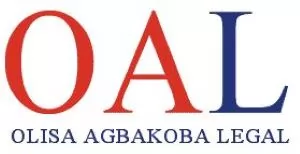- within Intellectual Property topic(s)
- in United States
- in United States
- with readers working within the Media & Information and Securities & Investment industries
- within Real Estate and Construction, Law Department Performance and Technology topic(s)
The facts of the case
In 2010, Ubom, a budding artist (Appellant), participated in Globacom's ('the Respondent') musical talent competition, GLO Naija Sings. She achieved second place in the competition but, contrary to her expectations, did not receive any monetary or material prizes. Several months later, Ubom was dismayed to discover that Globacom was extensively using her image on billboards across Nigeria to promote the 2011 edition of the competition, without her consent or authorisation. Feeling aggrieved by this unauthorised commercial exploitation of her image, Ubom initiated legal action before the High Court of Rivers State, seeking a declaration that the use of her image was illegal and reprehensible, claiming substantial general damages, along with an injunction to restrain further unauthorised use.
In response, Globacom argued that the subject matter of Ubom's claim pertained to copyright issues, specifically citing Sections 15(1)(a) and 26(1) of the Copyright Act Cap. C. 28 Laws of the Federation of Nigeria (LFN) 2004. Consequently, they contended that the matter fell under the exclusive jurisdiction of the Federal High Court, and therefore, the Rivers State High Court lacked the competence to hear the suit. The trial court and subsequently the Court of Appeal upheld Globacom's jurisdictional objection, striking out Ubom's case on the premise that it was a copyright matter.
Supreme Court's Reasoning and Judgment
The Supreme Court undertook a meticulous examination of the appellant's amended statement of claim to ascertain the true nature and substance of her grievance. IDRIS (J.S.C) emphasised a cardinal principle that:
"In dealing with pleadings, a court must read all the paragraphs together to get a flowing story of the parties and not a few paragraphs in isolation. It is the totality of the pleadings, whether it is the statement of claim or the statement of defence, that states the case of the party."
The Court observed that Ubom's claims fundamentally revolved around the unauthorised commercial exploitation of her image and likeness for advertising purposes and Globacom's economic benefit, without her consent. Whilst photographs can be considered artistic works and thus eligible for copyright under Sections 2 and 108 of the Copyright Act 2022 (which replaced the 2004 Act), the appellant's claim was not predicated on her being the author or owner of the copyright in the photograph itself. She did not assert that she took the photograph or possessed the exclusive right to control its reproduction as a copyright holder. Instead, her grievance stemmed from the unauthorised commercial appropriation of her identity and image, which she argued constituted a breach of contract (whether implied or actual, regarding the competition's terms) and an unlawful commercial use of her personality.
The Supreme Court noted that the lower courts had erroneously conflated the copyright issue in relation to a photograph (which typically vests in the photographer who expends creative effort in its making, unless otherwise agreed) with the independent right of an individual to control the commercial use of their image or likeness. The appellant's pleadings demonstrated a complaint about her "face, charm, personality, charisma, and talent" being used for Globacom's "economic course" and "monstrous financial accumulation" without her consent. This, the Court found, did not constitute an action for copyright infringement under the Copyright Act, which grants exclusive jurisdiction to the Federal High Court for such matters.
The Court clarified that for a claim to fall under copyright jurisdiction, the claimant must typically plead their title as owner, assignee, or exclusive licensee of the copyright, and then allege infringement of that copyright. Ubom's claim did not meet these requirements; rather, it articulated a grievance akin to a breach of image rights or a contractual understanding, focusing on the lack of consent for commercial exploitation of her image.
The Judgment
IDRIS (J.S.C) delivered the lead Judgment stating:
"In the light of the foregoing, I am of the very firm opinion that the concurrent decisions of both High Court of Rivers State and the Port Harcourt Division of the Court of Appeal should be disturbed as the said decisions were given in error and if same error is continued by this court, it would constitute a miscarriage of justice against the appellant. I hold that this appeal has merit and same is therefore hereby allowed. I hold that the State High Court, before which the matter was filed, has the jurisdiction to hear the matter and not the Federal High Court, as the matter is not one predicated on Copyright but Contract. The judgment of the Court of Appeal in Appeal No. CA/PH/385/2014 delivered on the 5th day of June, 2015, is therefore hereby set aside. It is hereby ordered that the matter be transferred to the Rivers State High Court for expeditious trial on the merits. The appellant is entitled to costs against the respondent."
This is a significant ruling that essentially overruled the decision of the lower courts and allowed Ubom's appeal. It held that the trial court and the Court of Appeal erred in declining jurisdiction. The apex Court clarified that the substance of Ubom's claim was not copyright infringement as defined by the Copyright Act, but rather a claim for breach of contract and unauthorised commercial exploitation of her image and likeness. As such, the exclusive jurisdiction granted to the Federal High Court under the Copyright Act for copyright matters did not apply. The proper forum for Ubom's suit was indeed the High Court of Rivers State. The case was therefore referred for trial on its merits.
Broader Implications and Clarifications Arising from the Judgment
- Jurisdiction: The Supreme Court clarified that claims relating to the unauthorised commercial use of a person's image (also referred to as 'image rights' or 'personality rights') are distinct from statutory copyright infringement claims. Consequently, the Federal High Court's exclusive jurisdiction under the Copyright Act does not extend to such claims. The appropriate court for actions concerning the commercial exploitation of an individual's likeness is the State High Court. This distinction reinforces the principle that jurisdiction is determined by the actual nature of the plaintiff's claim.
- Image Rights vs. Copyright: The decision underscores a crucial distinction; while the copyright in a photograph generally belongs to the photographer (the author who created the creative work), this copyright ownership does not automatically grant a blanket right to use the subject's image for commercial purposes without their consent. Ubom, as the subject of the photograph, retained an independent right to control how her likeness was commercially utilised. This highlights the emerging recognition of "image rights" or "personality rights" in Nigerian jurisprudence, separate from the photographer's copyright.
- Consent and Implied Terms: The ruling emphasises the paramount necessity of obtaining explicit written or oral consent whenever an individual's image is to be used for promotional or commercial purposes. Even in the absence of a formal written agreement, the Court implied that there might be understandings or expectations about permissible use, especially within the context of competitions and public appearances. The unauthorised use, in this case, negated any implied consent that might have arisen from her participation.
Conclusion
This landmark decision provides multiple lessons:
- Stands as a stern reminder for legal practitioners to always meticulously analyse the precise nature of a client's claim to determine the appropriate court and legal framework.
- It highlights the fact that not all disputes involving proprietary images automatically fall under copyright law.
- For companies, particularly those running creative competitions, engaging in advertising, or otherwise using participants' images for commercial marketing purposes, the judgment underscores the critical necessity of securing clear and explicit consent for such uses.
- Best practice demands that image and talent release forms be used by companies that require the use of images without restrictions post-event.
- It reinforces the fact that even where a formal written contract might be absent, implied understandings regarding image usage exist, and their breach can lead to substantial liability.
The content of this article is intended to provide a general guide to the subject matter. Specialist advice should be sought about your specific circumstances.



